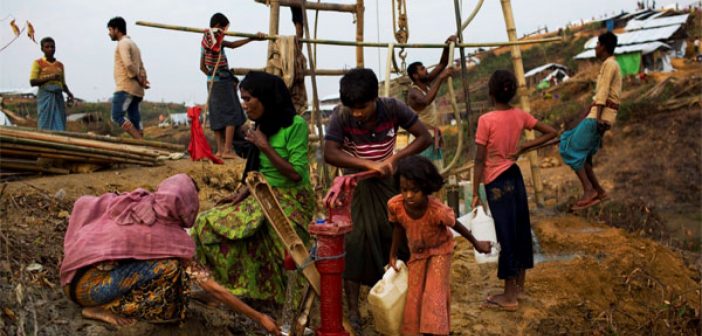Recent political upheaval in Bangladesh has raised significant concerns about a potential influx of refugees into India. The unrest culminated in Prime Minister Sheikh Hasina fleeing to India following widespread protests and violence. This situation poses several challenges for India, which must prepare to manage a possible deluge of refugees seeking safety across the border.
Background of the Crisis
The political crisis in Bangladesh erupted due to mass protests against the government’s controversial policies, including a regressive job quota system for government positions. The unrest, which started as student-led demonstrations, quickly escalated, resulting in violent clashes between protesters and security forces, leaving over 300 people dead and many more injured. The government’s severe response, including curfews and internet shutdowns, failed to quell the protests, ultimately leading to the resignation and flight of Prime Minister Hasina.
Following Hasina’s departure, Bangladesh President Mohammed Shahabuddin dissolved the Parliament and announced the formation of an interim government to restore order. However, the situation remains volatile, with fears of further instability and violence.
Refugee Influx Concerns
India, sharing a long and porous border with Bangladesh, is on high alert. The Border Security Force (BSF) has intensified its vigilance along the border, particularly in Assam and West Bengal, which are likely entry points for refugees. The Assam government has issued high alerts in its border districts, including Karimganj, Cachar, Dhubri, and South Salmara-Mankachar, to prevent unauthorized crossings and maintain order.
The potential refugee influx poses several challenges:
- Humanitarian Crisis: A large number of refugees would require immediate humanitarian assistance, including shelter, food, and medical care. India must be prepared to set up refugee camps and provide essential services.
- Security Risks: The influx could include not only genuine refugees but also elements that may pose security risks. Radical groups could exploit the situation to infiltrate and destabilize regions within India.
- Economic Strain: Hosting a large refugee population would place a significant economic burden on India, particularly in already resource-stretched border states.
- Social Tensions: The sudden arrival of refugees can lead to social tensions and conflicts with local populations, potentially exacerbating communal and ethnic divides.
Strategic Responses and Preparations
To mitigate these challenges, India needs a comprehensive strategy:
- Strengthening Border Security: Enhancing surveillance and patrolling along the India-Bangladesh border is crucial. The BSF and other security agencies must be equipped with advanced technology to monitor and control border crossings effectively.
- Humanitarian Aid: Preparing for a large-scale humanitarian response is essential. This includes stockpiling necessary supplies, setting up temporary shelters, and coordinating with international organizations for assistance.
- Screening and Registration: Implementing a robust system for screening and registering refugees will help in identifying genuine asylum seekers and filtering out potential security threats.
- Diplomatic Efforts: Engaging diplomatically with Bangladesh to stabilize the situation and prevent mass exodus is vital. India can offer support for peaceful transition and reconstruction efforts in Bangladesh.
- Community Integration Programs: Initiating programs to integrate refugees into local communities, providing them with education, vocational training, and employment opportunities can help reduce social tensions.
- International Cooperation: Seeking international support and cooperation can distribute the responsibility of managing refugees. Engaging with UN agencies and neighboring countries can create a regional response mechanism.
Conclusion
The political turmoil in Bangladesh has significant implications for India, particularly concerning the potential influx of refugees. While the situation poses considerable challenges, proactive measures and strategic planning can help India manage the crisis effectively. By strengthening border security, preparing for humanitarian needs, and engaging in diplomatic efforts, India can navigate this complex situation while upholding its humanitarian obligations and maintaining national security.





